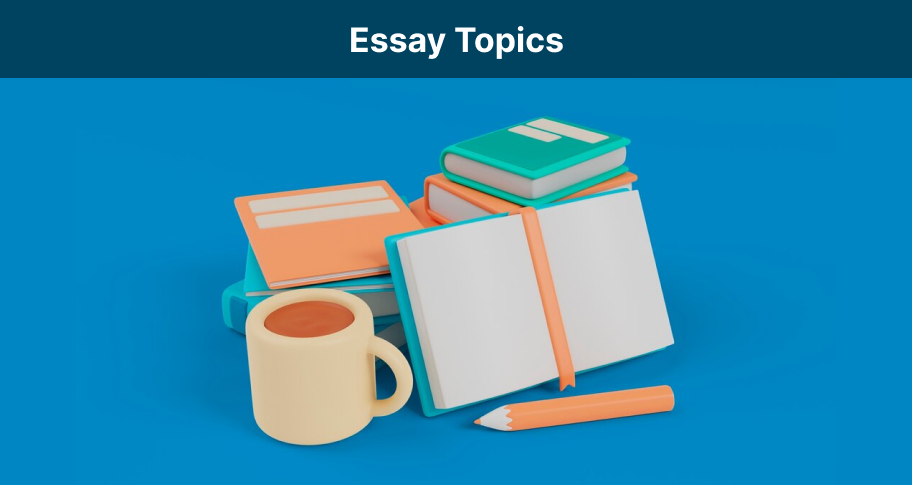No doubt about it, writing essays for class can be daunting. Unfortunately, there is no way to avoid writing essays in school. Even if you are a strong math and science student, eventually you will be expected to write an essay for a class. Essays are assigned from grade school onto graduate school. When you are an undergraduate student, you will be expected to write more essays than you thought humanly possible, often on subjects you know little about.
[download link]
View 120,000+ High Quality Essay Examples
Learn-by-example to improve your academic writing
Essays come easily for some people, but not for others. Those who struggle with how to write an essay sometimes do not know where to turn for help. This article is for you. If you are reading this now, it probably means you want to know more about how to write an essay. You are interested in getting better grades and improving your communications skills.
[download image]
This article will help you write an essay as painlessly as possible. You will learn not only how to write an essay, but also why essays are important. If you learn how to write a good essay now, writing essays will become easier for you in the future.
[related essays]
What Is an Essay?
The word essay comes from a Latin word meaning presenting your case. Because an essay means to present a case, you can think of an essay as an argument. The goal of an essay is to state your case and prove a point. Most essays are informative and analytical, focused on a central idea. That main idea is usually called the thesis statement.
An essay can be about anything, from pandas to pizza, from schizophrenia to school dress codes. Essays help you think critically about what you are learning in class, and encourage you to share your ideas with your mentors and peers using the tool of language. Even if you never learn to enjoy the art and science of essay writing, you should always learn how to write an essay to succeed in school and in your professional life.
Why Are Essays So Important?
Essays are not as arbitrary or as meaningless as you think. An essay is actually one of the most ancient forms of writing. The ancient Greeks, ancient Romans, and ancient Chinese all wrote essays about different topics like politics and philosophy. In contemporary settings, essays serve multiple practical functions beyond just bothering students. An essay is a common means by which experts communicate their ideas, expounding on evidence, research, and information.
Of course, the most common use of essays is in the academic setting. In junior high school or perhaps even earlier, you learn about the five-paragraph essay. The five-paragraph essay is the basic structure or foundation of all other academic essays. You may have already learned about writing a five-paragraph essay, but still need some help on how to write an essay and improve your grades. This article will show you how to write different types of essays.
You will need to know how to write an essay for your college applications, and some job applications too. If you ever apply for a grant or scholarship fund, you will need to write an essay. You may one day want to write an essay about a subject you feel passionate about, to publish in a magazine or newspaper. Some of your blog posts might start to resemble essays after you learn how to write an essay and realize why essays are so important.
Different Parts of an Essay
When learning how to write an essay, it helps to break down the components of an essay so you better understand each one. When you understand the parts, it is easier to understand the whole. The main parts of an essay include the introduction, the body, and the conclusion. Seems simple, right? Because it is. When you realize how straightforward the three parts of an essay are, you will learn how to write an essay in no time.
Essay Introduction
Start strong. You know how a good song always has a catchy introduction? Or the way a good movie starts with an exciting scene? Introductions are important. The last thing you want to do is make your reader go to sleep because you bored them to death by the first line. Learning how to write an essay means learning how to write the introduction well.
To write a good introduction, some people find that it helps to start off with a controversial statement. Instead of writing, “Obesity is a big problem in America,” write, “Americans are getting fat.” Alternatively, a good introduction can start with an alarming fact or statistic such as, “Two-thirds of the adult population in the United States are overweight or obese, causing one of the greatest preventable health epidemics in human history.” You can also grab your reader’s attention by quoting from an expert in the field.
As you write your introduction, you will move from your opening statement towards a brief summary of your main ideas. You can also include some background information in the introduction, if necessary. Finally, be clear with the reader. Let the reader know what your thesis statement is by the end of the introduction. Some instructors will expect your thesis statement to be the very last sentence of the introduction.
Questions you can ask yourself when writing the introduction to your essay include:
Why am I interested in this subject?
Why is this topic important?
What do I want the reader to learn or understand?
Why do I feel strongly about this subject?
Essay Body
The body of your essay is where you will develop your main ideas and arguments. Ideally, your body has a recognizable structure, in which each idea flows into the next in logical format. Using the five-paragraph essay format, you can learn how to write an essay that is organized. The five-paragraph essay format breaks down your main idea into three constituent parts, resulting in three distinct but related body paragraphs.
When you become more adept at writing essays, or are composing more advanced essays in college, you will not be necessarily writing an essay with exactly five paragraphs. In fact, some essays do not use a five-paragraph essay format at all. When you are new to essay writing, however, make sure you follow the five-paragraph essay format in the body of your essay.
The body of your essay should have a logical flow. Each body paragraph should begin with a topic sentence that essentially summarizes what you are going to say. You also need to use transition statements to lead from each body paragraph to the next one.
Essay Conclusion
A proper conclusion is the clincher for a good essay. In addition to wrapping up what you said in the body of the essay, the conclusion should leave the reader feeling satisfied. If you struggle with the conclusion, it is possible that you left too many loose ends in your essay. Learning how to write an essay means learning how to keep your thoughts focused and organized. When you reach the conclusion of your essay, you and your reader will feel a sense of closure.
Thesis Statement
In addition to the introduction, body, and conclusion, many essays also have other important components. All essays will have a central topic or idea, as well as a thesis statement. Usually, you present your thesis statement by the end of your introduction. Many teachers prefer that you narrow down your thesis statement into one sentence. However, if you are writing a long and complicated essay, your thesis statement might require more than just one sentence.
Essay Outline
Most students find that an outline helps them write better essays. If you want to master how to write an essay, always start with an outline. One of the most important features of an essay is organization, and another is clarity. An outline helps you achieve both organization and clarity when you begin writing. Some instructors will ask you to write an outline as a separate assignment. In these cases, you will be expected to write a thorough and formal outline. Later in this article, we will show you how to write an outline for an essay.
Bibliography
When you write your essay, you may be asked to provide a list of references. The list of references, sometimes called a “bibliography” or “works cited” page, is a critical component of most academic essays. A list of references shows that you did research on your subject, and lets the reader (usually your instructor) verify your sources.
Essay Title
Finally, most essays benefit from a strong title. You might find that you write your best titles after you finished your essay. Occasionally, though, a punchy title can become part of your outline and help keep your thoughts organized and focused on the primary themes and ideas.
Plagiarism and Academic Honesty
Unless you are told to write an essay based totally on your personal opinions or experiences, you will most likely need to do some research on your topic. When you do research, you might inadvertently borrow what you have read and incorporate that information into your paper without giving credit. If you do this, you are committing the act of plagiarism, a serious offence.
For this reason, always compile a list of references immediately after you start doing research. Any source you consult will go into your references page. If you paraphrase, make a note or citation in the body of your essay. When you make notes and citations, use the citation style suggested by your instructor. Common citation styles include APA, MLA, and Chicago.
How to Write an Essay Outline
Writing a good essay outline can make all the difference in the world when you are learning how to write an essay. An outline is what will help prevent most of the problems in essays that lead to poor grades. You might think an outline is a waste of time now, but the truth is that the better your outline, the faster and easier it will be to write your essay.
The basic structure for a formal essay outline is as follows:
I. Introduction
A. Controversial statement, shocking statistic, or alarming quotation.
B. Background information and why the issue is important
C. The main points you are going to focus on in the essay
D. Thesis statement
II. Body Paragraph 1
A. Topic sentence
B. Support, evidence, and proof.
C. Explaining the supporting evidence
III. Body Paragraph 2
A. Topic sentence
B. Support, evidence, and proof.
C. Explaining the supporting evidence
IV. Body Paragraph 3
A. Topic sentence
B. Support, evidence, and proof.
C. Explaining the supporting evidence
V. Conclusion
A. Restate the thesis statement.
B. Summarize the main arguments made in the essay
C. Closing sentence, perhaps urging the reader to take action.
Sample Essay Outline
I. While some seem entertaining, conspiracy theories can be a sign of a “deep social malaise,” (Drochon, 2017)
A. Conspiracy theories are problematic because they appeal to emotions like fear.
B. Conspiracy theories are especially problematic in the age of social media.
C. Conspiracy theories and logical fallacies are equally as common among liberals and conservatives.
D. Thesis: Conspiracy theories are more than just “fake news,” because they represent dangerous worldviews that threaten social order and even national security.
II. Conspiracy theories are problematic because they appeal to emotions like fear.
A. As such, conspiracy theories are a form of propaganda, misleading information that is designed to manufacture suspicion about the government, science, or any other social institution.
B. The danger with conspiracy theories is that they undermine logic and reason.
III. Conspiracy theories are especially problematic in the age of social media.
A. Social media allows conspiracy theories to spread like wildfire, making it seem that fake news is actually real.
B. The echo chamber effect suggests that few social media connections will challenge a logical fallacy or a conspiracy theory.
IV. Conspiracy theories and logical fallacies are equally as common among liberals and conservatives.
A. Interest in or embrace of conspiracy theories seems like a universal human trait.
B. Although both liberals and conservatives fall pray to conspiracy theories, they do tend to believe different types of conspiracy theories.
V. Conclusion
A. Conspiracy theories in some ways reflect the anti-intellectual and anti-science trend in American society.
B. Because conspiracy theories are not grounded in fact, belief in conspiracy theory requires logical fallacy and impedes critical thinking.
C. Conspiracy theories are inherently dangerous, presenting a possible threat to society.
References
Drochon, H. (2017). We’re suckers for conspiracy theories. Retrieved online: https://www.theguardian.com/commentisfree/2017/nov/01/conspiracy-theories-social-malaise-fake-news-exclusion
Types of Essays
You may be asked to write not simply an essay, but an “expository essay,” or an “argumentative essay.” As confusing as it seems, there are many different types of essays. The longer you are in school, the more likely it will be that you are asked to write different types of essays. Some of the most common essays assigned in classes include the following:
Expository Essay
An expository essay is among the most common type of essay assigned to students. When you write an expository essay, you are explaining, explicating, and analyzing. You could write an expository essay on the main themes in a work of literature, or an expository essay on the Protestant Reformation.
Argumentative Essay
Although most essays require that you take a stand and make a case, an argumentative essay asks that you use a far more opinionated tone to prove your point. You can write an argumentative essay about controversial subjects, such as why Trump should be impeached now. Some argumentative essays will require outside research, but others will call upon your own powers of rhetoric to make a case. The more controversial the topic, the easier it will be to write an argumentative essay. However, a good writer can write an argumentative essay about silly things like why wearing white after Labor Day is a bad idea.
Persuasive Essay
Like an argumentative essay, a persuasive essay takes a strong opinion on a subject. A persuasive essay takes the argumentative essay a step further, asking the reader to take some action or at least change the reader’s mind. (Look here if you need some help finding persuasive essay topics)
Cause and Effect Essay
A cause and effect essay is especially common in subjects like history, public policy, environmental science, and economics. All historical, social, and political events have documented causes and effects. However, each person will interpret the causes and effects differently. For this reason, it helps to know how to write an essay that explains why you believe certain things caused an event. Many events have multiple causes, and scholars disagree on which are the most important. Likewise, the effects of an event might not be as apparent as they seem to other people. When you write a cause and effect essay, your job is to persuade the reader or argue your case that these causes and effects are the most important.
Compare and Contrast Essay
Commonly assigned, the compare and contrast essay is among the easiest to master. When you compare and contrast two items, you can talk about any of their features. Your compare and contrast essay can have a block structure, in which you fully discuss the properties of the first element before discussing the second. Alternatively, you can organize your cause and effect essay one feature at a time, and effectively discuss why the items are similar or different throughout the essay.
Process Essay
A process essay is a type of technical writing, in which you explain to the reader how something is done. Process essays may be helpful in technical subjects like the sciences. Some process essays are about how a bill becomes a law, or how a company seeks and find venture capital. You can also learn how to write a process essay that provides a step-by-step instructional manual for the reader.
Narrative Essay
One of the least common essay formats is the narrative essay. A narrative essay is not expository in nature, and may involve more creative writing skills than critical thinking. To narrate means to tell a story; a narrative assumes the format of a story more than a five-paragraph essay.
However, a narrative essay is still formal academic writing. When you are assigned a narrative essay, you may even be able to write in the first person. A narrative essay can be written in the third person, too. For example, you could write a narrative essay on how an acorn grows up into an oak tree.
How to Write an Essay (5 easy steps)
If you want to know how to write an essay in five simple steps, this guide is for you.
1. Choose and narrow down your topic. This step might require some brainstorming, or you could surf the Web for some ideas. Alternatively, ask your instructor or a writing tutor for some tips on how to pick a topic and narrow it down. Even when the topic has been chosen for you by the instructor, you still need to decide how you will approach the subject in a unique way that will make your essay stand out from the crowd.
2. Do research. Research will help you get the juices flowing, as you familiarize yourself with the topic. When you do research, you are also learning how to formulate your opinions on the subject so that when you write the essay you will have a full command of the topic. If you have been asked to cite scholarly sources in your essay, research is an essential step for how to write an essay.
3. Write an outline. Even before you hone your thesis, writing an outline helps you organize your thoughts. The outline also provides the structure of the essay so you remain organized, focused, and within the correct page count. By the time you complete your outline, you will have a much better idea of what you want to say and how.
4. Hone your thesis. At this point, you are ready to begin writing. Take your outline and use it as a skeleton for your paper. Your thesis statement will guide you, as you connect everything you say to the main idea. Remember that an essay is about making a case, and the thesis statement is the elevator pitch for that case.
5. Write and rewrite. One approach to writing an essay is to first write a first draft without censoring yourself or worrying about perfect sentence composition and grammar. Then you could go back later and perfect what you wrote. Another approach to how to write an essay is to work systematically from the outline, slowly crafting your ideas as you go. Either way, proofread your work thoroughly at the end and make sure all your paraphrasing, quotes, and sources are properly cited.
Conclusion
Essays are as certain as death and taxes. Writing an essay does not need to be frightening or stressful. As with any new skill, practice makes perfect. If you really want to know how to write an essay, the only real answer is to start writing now. Beginning with a brainstorming session can help you overcome some of your anxiety as you let your brain roam over the ideas freely. It might also help to read and research the topic on the Internet, because the background information might give you ideas of how to proceed.
Once you know what you are going to say and how, you will feel ready to begin writing the essay. Writing an essay can empower you to express your ideas confidently, in ways that are backed up by fact. Your communication will become more sophisticated when you learn how to write an essay. An essay helps you organize your thoughts, and logically present your case. You also learn critical thinking skills when you write essays for class.
Many students struggle with essay writing. If you have a hard time understanding how to write an essay, you can ask for help. Writing tutors, classmates, mentors, and instructors can all be of help at any stage of the writing process. Finally, leave yourself enough time to write your essays to reduce stress. You can always refer back to this article as a helpful guide on how to write an essay.





